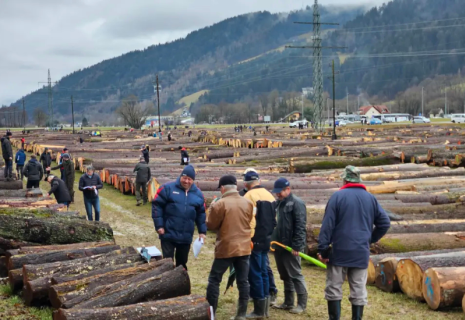
Traditional folk music of Bosnia and Herzegovina: a rich cultural tapestry
Bosnia and Herzegovina, a land where East meets West, is renowned for its vibrant cultural heritage. Among its most treasured traditions is its folk music, which tells stories of love, struggle, and identity. Rooted in the country’s diverse history, this music reflects influences from Ottoman, Slavic, and Austro-Hungarian traditions, creating a unique soundscape that resonates with both locals and visitors alike, CE Report reports.
Sevdalinka: The Heart of Bosnian Folk Music
The soul of Bosnia and Herzegovina’s musical tradition lies in sevdalinka. Often referred to simply as sevdah, this genre emerged during the Ottoman period and is characterized by its melancholic melodies and poetic lyrics. Sevdalinka songs typically explore themes of longing, unrequited love, and deep emotional introspection.
Sevdah is usually performed with traditional instruments like the saz (a string instrument similar to a lute) and the accordion. Its vocal delivery, often accompanied by slow, mournful instrumentation, captures a raw emotional depth that has captivated audiences for centuries. Iconic sevdalinka songs such as "Emina" and "Snijeg pade na behar, na voće" continue to be celebrated as cultural gems.
Instruments That Define the Folk Tradition
The instrumentation of Bosnian folk music plays a significant role in shaping its sound. Commonly used instruments include:
Saz: A stringed instrument of Persian origin, vital in sevdalinka performances. Tamburica: A smaller lute-like instrument popular in rural communities. Šargija: Similar to the saz but with regional variations. Accordion: Introduced during Austro-Hungarian rule, it became an integral part of the Bosnian musical repertoire.
These instruments blend harmoniously to create a soundscape that is both nostalgic and haunting.
The Role of Ganga and Other Regional Styles
While sevdalinka is a national treasure, Bosnia and Herzegovina is home to other unique folk styles. Ganga, a traditional polyphonic vocal style, is particularly prominent in rural Herzegovina. This energetic form of music involves group singing where voices overlap and intertwine, creating a powerful, almost primal sound.
In the northern regions, influences from neighboring Croatia and Serbia have shaped the kolo, a lively dance accompanied by upbeat folk tunes. These regional differences highlight the rich musical diversity within the country.
Folk Music in Contemporary Culture
Despite modernization, traditional music remains a vital part of Bosnia and Herzegovina’s identity. Festivals such as the Baščaršija Nights Festival in Sarajevo celebrate sevdalinka and other folk genres, attracting audiences from around the world. Additionally, contemporary artists like Amira Medunjanin have brought a modern touch to sevdah, introducing it to global audiences.
Preserving the Legacy
Efforts to preserve and promote traditional music are ongoing. Educational programs, cultural organizations, and international collaborations aim to ensure that future generations understand the significance of Bosnia and Herzegovina’s musical heritage. Sevdalinka, ganga, and other styles serve as a bridge connecting the past with the present, showcasing the resilience and creativity of the Bosnian people.
Conclusion
The traditional music of Bosnia and Herzegovina is more than just entertainment; it is a living chronicle of the nation’s history and soul. From the heartfelt strains of sevdalinka to the robust harmonies of ganga, each note tells a story of a land that has embraced and blended diverse influences. Whether performed in a quiet café or on a grand festival stage, this music continues to inspire, connect, and celebrate the enduring spirit of Bosnia and Herzegovina.
























